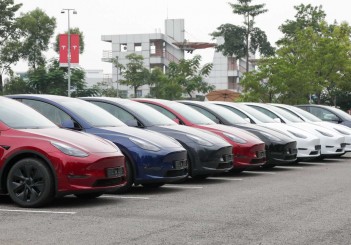
This model was first introduced in Brazil in 2004, followed by three other South American countries.
Although its popularity waned over the years, due in part to the growing demand for another Ford model, the Escape, Ford decided to revive the EcoSport on a global scale with a prototype model at a European motor show in 2012.

Its production started at Ford India’s Chennai plant in 2013 for the domestic and European markets and subsequently at its Rayong factory for distribution in South-East Asia, China, Australia and New Zealand.
Sime Darby Auto ConneXion, the Malaysian Ford distributor, had the EcoSport (pronounced as “EchoSport” rather “E-co-Sport”) displayed at the KL International Motor Show 2013.
To give potential buyers an idea of the price, SDAC listed it as between RM95,000 and RM115,000 depending on variants, these being the Trend, Ambiente and top-range Titanium.

This included drives through tight city lanes, narrow coastal roads, highways and a winding stretch up to a low-lying vineyard, where we had a short off-road stint.
The EcoSport provided for the drive was the Titanium variant powered by a 1.5L Ti-VCT engine: if that sounds familiar, yes, this is the same engine that powers the Fiesta because the EcoSport is based on a similar platform.
Output is similar with the global four-cylinder engine, complete with double overhead camshafts, multi-valve cylinders and variable valve timing, putting out 110PS and 142Nm of torque.

The EcoSport has a ground clearance of 200mm, while the Fiesta’s would probably be about 120 to 130mm.
In addition, the EcoSport can wade through waters up to 550mm deep, or about a third in height of the average Asian.
While it can wade through shallow flood waters, the EcoSport is no four- or all-wheel drive: it is a front-wheel drive like the Fiesta.
There is an all-wheel drive model in Brazil, but for such a system, it must have an independent multi-link suspension.
In keeping cost down, the EcoSport has the same twin-beam torsion rear suspension as the Fiesta while the front is independently sprung with MacPherson struts.

Stepping into the EcoSport was almost as good as getting into the Fiesta: the dashboard and instrument panel design was about the same, with that in the EcoSport having shiny chrome panels in the central dash area.
There is the same multi-function display nestled in a centrally located cowl compartment on the dashboard top, with the wing-like control panel dominating the middle section, and the air-conditioner controls underlining the bottom.
The instrument panel comprises two deeply set binnacles for the tachometer and speedometer that is about Fiesta in design as it could be.
Being the Titanium model, the electronically controlled sunroof comes standard with a manually controlled sliding cover to shut out the sun during noon drives.

And there are two power plug points: one in front at the base of the gearshift console and the other at the rear to the side (driver side) next to the door.
According to Joao Marco Ramos, Chief Designer, Ford South America, the power plug location at the rear is ideal as the one in front is already in the centre.
We found this a bit odd as it means that only the rear passenger nearest to this plug point will benefit.
Moreover, when the door is opened on a rainy day, some water may fall onto the area. It would also impede movement in and out of the car if something is plugged in.

The EcoSport is obviously a heavier vehicle with its greater dimensional expanse, but we didn’t feel the extra metal on the go.
The 1.5L engine didn’t have to work hard to get going, even during short bursts to 160kph, but the gearing of the six-speed PowerShift automatic transmission was a bit on the high side.
At 100-110kph, the engine was turning at the higher end of 2,000rpm and not the lower end as in some six-speed automatic cars.
As in the Fiesta, the electronically controlled transmission would hold a gear if it sensed that we needed the engine torque when going down an incline or moving in urban traffic.
The SelectShift (S) option is not the best we have seen: there is a button to the side of the gearshift knob.

The ride was good with the EcoSport taking to bumpy stretches and rumble strips well and without harsh jolts. The double door insulation, among other NVH measures to suppress noise intrusion, kept the interior quiet on the move.
Air turbulence around the aerodynamically crafted body was kept to a minimum, again leading to a quiet ride (we were cruising often at 120-130kph on the highways under convoy driving).

The EcoSport should do well in the Malaysian market if the price is kept reasonably affordable.
It has no rivals other than the Peugeot 2008 as the Toyota Rush has been discontinued here.









